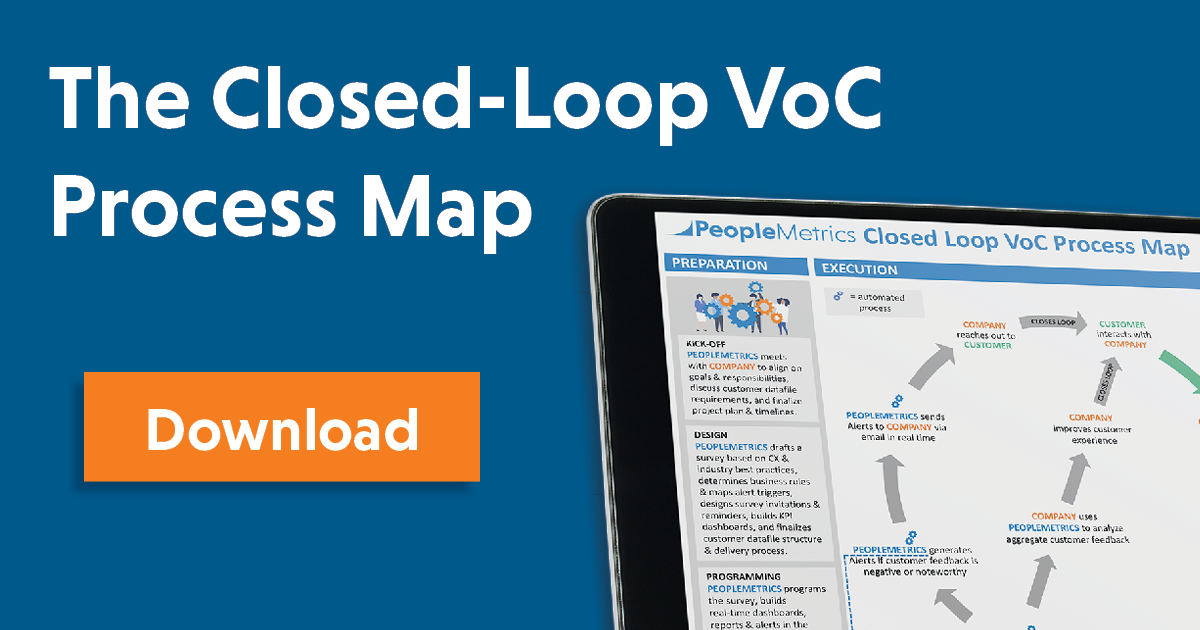Centralized vs. Decentralized Model
The first is a centralized model. It’s best for organizations with a large volume of alerts.
In this model, a centralized team is composed of a handful of members who are responsible for closing the loop on all recover alerts. If they cannot resolve the issue themselves, they often assign the case to someone in the organization who can. But they are always involved in the process and are ultimately responsible for closing out all recover alerts.
For organizations with fewer alerts or with a high-touch business model, a decentralized model often works best.
In this model, alerts go directly to the location or department where the issue began.
In a high-end hotel, for instance, alerts often go directly to a location’s general manager. There’s no need for a centralized team to decide whether they follow up or forward the alert. This individual at the hotel where the alert was based will either follow up themselves or assign the alert to someone at the hotel who is better equipped to resolve it. For example, a recover alert about a dirty hotel room may go to the leader of housekeeping.
The Trade-Off
There is a trade-off with the centralized and decentralized models.
In a centralized model, you have to hire people to handle these alerts, which adds to overall costs.
But in a decentralized approach, you’re adding more responsibility to the company’s general managers and department heads whose job it is to deliver a great customer experience. Even if they’re reassigning the alerts, they still have to filter through them. This can be a major daily undertaking when a lot of alerts are involved.
The advantages of the centralized approach is you have a small group of people whose job it is to get to the root cause of the alert (more on root cause analysis in a future blog post). These people are laser-focused on getting the real story about what happened (i.e., the root cause) and take the appropriate action to resolve the customer issue.
The centralized approach is also less biased in that they were not the ones who caused the problem in the first place, making getting at the root cause more objective.
The decentralized approach puts the follow-up in the hands of the people or department that is responsible for the customer experience.
The advantage to this approach is that these are the people who know the customer the best, have the knowledge of the customer situation and can often best empathize with the customer. These are also the people who can benefit the most from hearing the customer’s pain and using that information to improve the experience in the future. They are also part of the “democratizing of customer feedback” that is so important in creating a customer-centric culture.
This is not an easy call by any means. There are good arguments for both approaches.
All professional VoC software platforms have sophisticated alert management capabilities that can streamline your recover alert processes within your organization.
Alert management includes workflows that allow alerts to be assigned and reassigned. You can see the number of days each recover alert is outstanding, and whether its status is open, closed, or pending. All notes about the customer issue and its resolution should be housed and accessible within alert management.
Even in a decentralized model, someone in corporate will likely want to know the number of alerts triggered by a specific location or the current number of open alerts. They should be able to spot key issues and compare locations, allowing them to see how their locations compare.
This is where it becomes important to select the right VoC partner for your situation. Some VoC software providers charge companies on a per-user basis, which can indirectly influence companies to limit the number of people who can access case management.
An unlimited user model, on the other hand, encourages people to look at customer feedback more frequently and provides flexibility in assigning alerts to anyone in the organization who is best equipped to follow up on them.
At PeopleMetrics, we believe so strongly in the value of a good customer experience that we feature an unlimited user model so that every employee in the organization can participate in creating better customer experiences.
That leads to a more customer-centric culture!
We’ve had clients ask us if closing the loop with unhappy customers is worth the effort.
Has fixing the problem really helped them? Were customers retained? Did their NPS score rise?
In response, we created what we call a Full Circle Survey.
Here is how it works: When a recover alert is resolved and closed, we reach back out to the customer with a few questions.
We ask, “Did the person who contacted you fully address your concern or resolve your problem?” If the customer’s problem was not resolved, we reopen the case. If the customer’s problem was resolved, we ask them if their perception of the company improved, stayed the same, or worsened, based on the resolution.
This is a simple follow-up to the original follow-up, and it has yielded a 25% response rate from customers!
Since most recover alerts are triggered by detractors, how a company addresses their concerns is extremely important for future business. After this follow-up, 48% of the detractors have said that their perception of the company improved!
The takeaway here is that once a recover alert is closed, the problem still may be out there in the customer’s mind.
The best practice is to follow up after the alert is closed to find out. If it wasn’t resolved, you have an opportunity to make it right. If it was resolved, you can figure out the impact of that extra interaction with the customer and whether it improved the relationship.
This technique is not common practice yet, so putting it into practice will give you a leg up on the competition.
○ ○ ○
About the Author
Sean McDade, PhD is the author of Listen or Die: 40 Lessons That Turn Customer Feedback Into Gold. He founded PeopleMetrics in 2001 and is the architect of the company’s customer experience management (CEM) software platform. As CEO, he guides the company’s vision and strategy. Sean has over 20 years of experience helping companies measure and improve the customer experience. Earlier in his career, he spent five years at the Gallup Organization, where he was the practice leader of their consulting division. His company offers CEM software with advanced machine learning solutions and hands-on analytical support to help companies make sense of their CX data. Sean holds a Ph.D. in Business Administration with a specialization in marketing science from Temple University in Philadelphia. He has published eight articles in peer-reviewed scholarly journals and has taught over 25 marketing classes. Sean was named a 40 under 40 award recipient of the Philadelphia region. He is an active Angel Investor, including investments in Tender Greens, CloudMine and Sidecar.
Topic: Alert Management






%20(1).png)